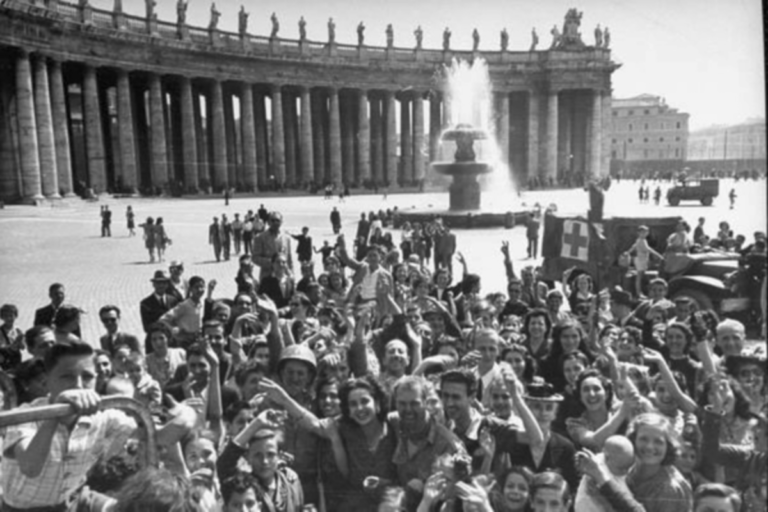
On 5 June, 1944, the United Stats Fifth Army under the command of General Mark Clark marched into the city of Rome.
Like many things in World War 2, this campaign had it’s origins in what we can call politics.
The first factor was that Soviet dictator Josef Stalin had been pressing British and American political leaders for a “Second Front” to help take German troops away from the “Eastern Front” where ferocious fighting was still ongoing.
The second factor was that the British and American leaders believed that taking Italy and especially Rome would force the Germans to divert more troops from guarding the French Coast.
On 3 September, 1943 the Allies invaded Italy, launching the assault from the recently captured Island of Sicily. On 8 September Italy officially surrendered and Gemany went from being an ally to a brutal invader. German troops occupied Italy and constructed a series of defensive lines in the rugged mountains that crossed Italy from coast to coast.
The fighting continued through 1943 into 1944. On 22 January, 1944 the Allies attempted an end run around the German troops by invading Anzio. What initially seemed like an easy landing turned into a tortuous blood bath with the British, American, and other nations troops losing large numbers of soldiers killed, injured, or captured.
The battle in Anzio dragged on through the winter and into May. On 23 May, Allied forces broke out of Anzio and in what is still a highly controversial decision turned northwest and marched towards Rome.
By the end of the month, the Germans had deserted the Gustav Line, leaving the way open for the Allies to march into Rome.
The Liberation of Rome was not the end of the campaign in Italy. Fighting continued right up until the end of April 1945. The Germans continued to fight from defensive line to defensive line, exacting high numbers of Allied casualties.
Making matters worse, many of the troops that originally landed in Italy were withdrawn and moved to the invasion of southern France after the D Day landings in northern France on 6 June 1944.
All of this in what Churchill called the “Soft Underbelly of Europe.”
The Liberation of Rome and arduous fighting before and after that would have been a big story, however it was all overshadowed by the landings at Normandy the next day. That became perhaps the most famous event of the war in Europe and thus people forgot about Italy and Rome.